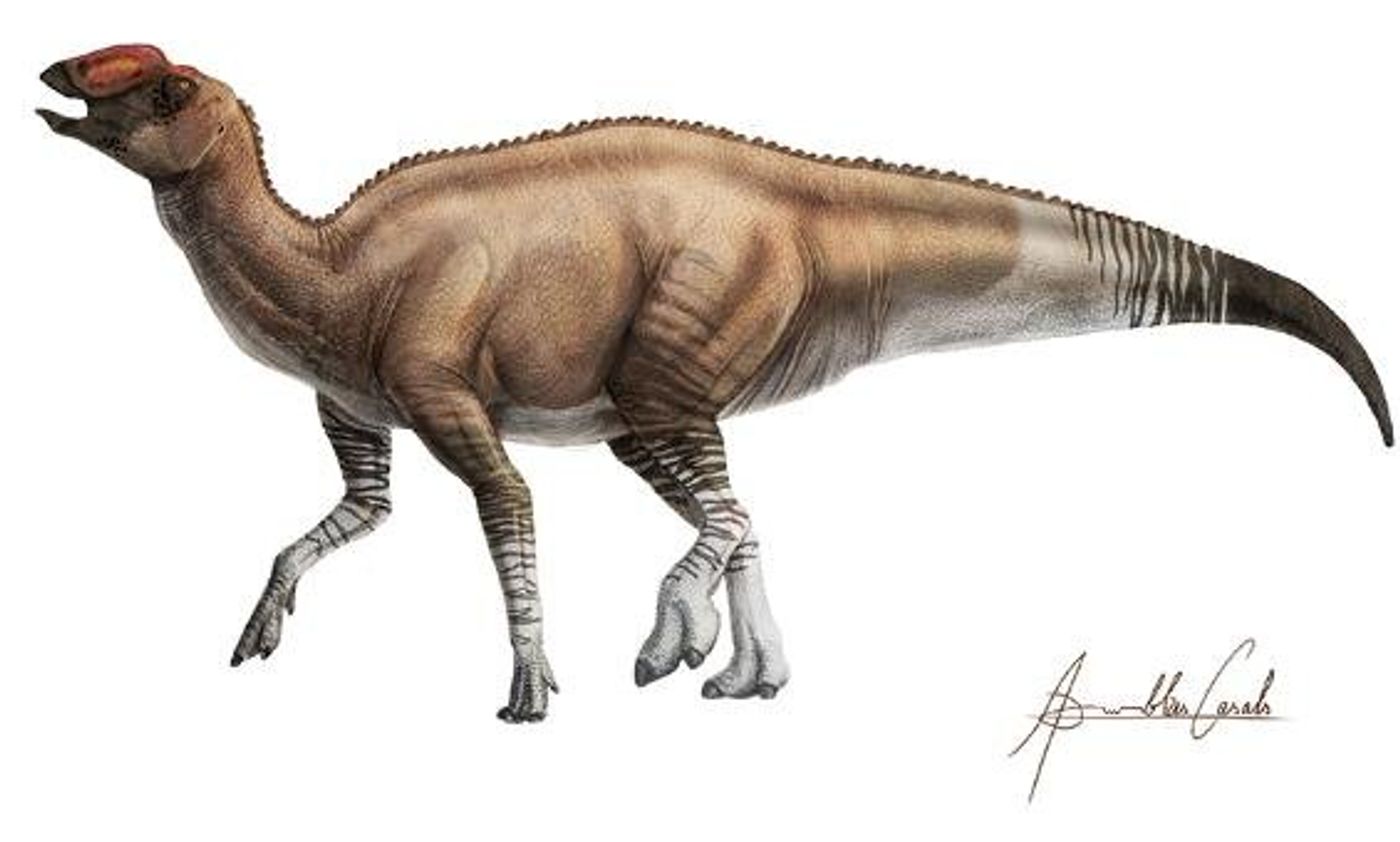Paleontologists Describe a Peculiar Duck-Billed Dinosaur Based on Fossils
Millions of years before the dawn of humankind, dinosaurs walked the Earth. While they aren’t around today to tell their side of the story, paleontologists are seemingly always unearthing fossilized remnants of the giant and mysterious beasts that help tell their story for them.
Identifying dinosaurs from their fossils can often be tedious and challenging work, especially when attempting to distinguish new specimens from known specimens. With that in mind, it’s not inconceivable for the process to take several decades, such as in the case of a newly-confirmed genus and species dubbed Aquilarhinus palimentus.
Image Credit: ICRA Art
The findings, which have been published in the Journal of Systematic Palaeontology, describe A. palimentus as a new-to-science breed of hadrosaurid, or otherwise known as a duck-billed dinosaur. Its remnants were initially discovered in the 1980s but were later identified in the 1990s as a type of Gryposaurus. A closer analysis in modern times instead suggests otherwise, hinting that the A. palimentus remains are too primitive to be related to Gryposaurus.
"This new animal is one of the more primitive hadrosaurids known and can therefore help us to understand how and why the ornamentation on their heads evolved, as well as where the group initially evolved and migrated from," elucidated Dr. Albert Prieto-Márquez from the Institut Català de Paleontologia Miquel Crusafont, the paper’s lead author.
"Its existence adds another piece of evidence to the growing hypothesis, still up in the air, that the group began in the southeastern area of the US," he continued.
Related: 'Baby Louie' fossil officially identified as giant bird-like dinosaur species
Duck-billed or hadrosaurid dinosaurs are understood to have been herbivorous, and from what we can gather, the jaws of most known hadrosaurids came together to form a U-shaped snout that helped them munch away at greenery. The remains left behind by A. palimentus were somewhat different in that respect, as the jaws formed a W-shape instead, and this suggests that the dinosaurs used this shape to ‘scoop’ aquatic plants out of the sediment at their feet.
This shape has implications for A. palimentus’ eating habits, and its primitiveness also speaks to the number of known lineages concerning hadrosaurids. Studying the species’ remnants could help experts in their quest to better understand what existed before the most well-known dinosaurs and fill gaps in the evolutionary tree. That said, it ought to be interesting to see where this train goes…









